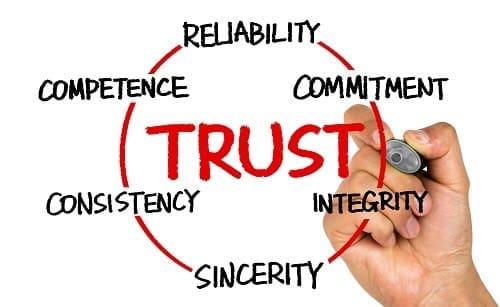
Trying to Build a Successful Small Business?
Like the countless number of stars in the night sky or grains of sand on a beach, there is an infinite number of ways to build a small business. The challenge for you, the business owner, is to identify the strategy, compile a business plan that best fits your personality and company, and follow it through to a successful conclusion.
One of the most popular and well-known strategies for start-ups, of course, is to find an unfilled niche in the marketplace and make it your specialty. Many successful entrepreneurs have followed this path to profits and success. But it’s not the only strategy out there. Today, we’re going to look at another strategy you may want to pursue.
Even the best and brightest small business owners seldom achieve success all on their own. Somewhere along the line, they had some kind of help or a business partnership that enabled them to overcome a difficult challenge or allowed them to make a breakthrough that enabled them to be the successful business owners they are today. For instance, many growing businesses struggle with slow-paying customers, and that leaves a cash flow gap which makes it difficult to cover daily needs and scale. At Charter Capital, we help businesses fill that gap by accelerating cash flow through invoice factoring with tailored services for specific industries. Our oilfield factoring services, for instance, help oil and gas service companies. Of course, funding is not the only challenge businesses face. Every company, no matter the size, has a gap they need assistance with. One way to guide your small business to ultimate success is to make it your mission to identify that gap and develop new ideas to fill it for your target market.
Bill Gates, the co-founder of Microsoft, is certainly one of the most successful small business entrepreneurs of all time. His company has products found on virtually every computer and electronic device in the world and his innovation is world-renowned. But as big as the company is today, it started quite small. What started it on the road to its current level of dominance is the strategy it used to get going. Gates didn’t start out with Windows 10 or MS Office. No, he started by filling larger organizations’ gaps. Gates built relationships with these larger computing companies, learned they had areas where they needed help, gained their trust and provided a valued service and expertise. In Gates’ particular case, it was providing software for computing giant IBM that was an important factor for building his personal success.
At the time, IBM was THE world’s computing giant. There was IBM, and then there was everyone else. To think that IBM had any kind of computing or programming need that they couldn’t fill on their own seemed laughable. Yet Gates, who was essentially a nobody at the time, took the chance, asked the questions and built the crucial trust-based relationships that enabled him and his fledgling Microsoft to be the company that would fill the gaps in IBM’s personal computer business. Without taking advantage of that opportunity and those relationships, the world of computing might look far different today.
To achieve success and build a profitable business, then, is to constantly be thinking of partnerships. Think of partnerships not that can just benefit you, but of partnerships where both sides can aid one another and learn valuable lessons from each other. Yes, Gates received valuable work, contacts, assets and references he later turned into a multi-billion-dollar corporation. But Gates also learned things from IBM and, in turn, IBM learned some things from him. Their partnership was a two-way street. When you have a relationship and a partnership like that, no gap is too large to overcome for you and your team member to run a successful business.









 A growing economy and full-employment workforce are great things for America and its citizens… unless you’re a small business employer looking to fill a job and face an ever-shrinking pool of applicants. In July 2018, the national unemployment rate
A growing economy and full-employment workforce are great things for America and its citizens… unless you’re a small business employer looking to fill a job and face an ever-shrinking pool of applicants. In July 2018, the national unemployment rate 






